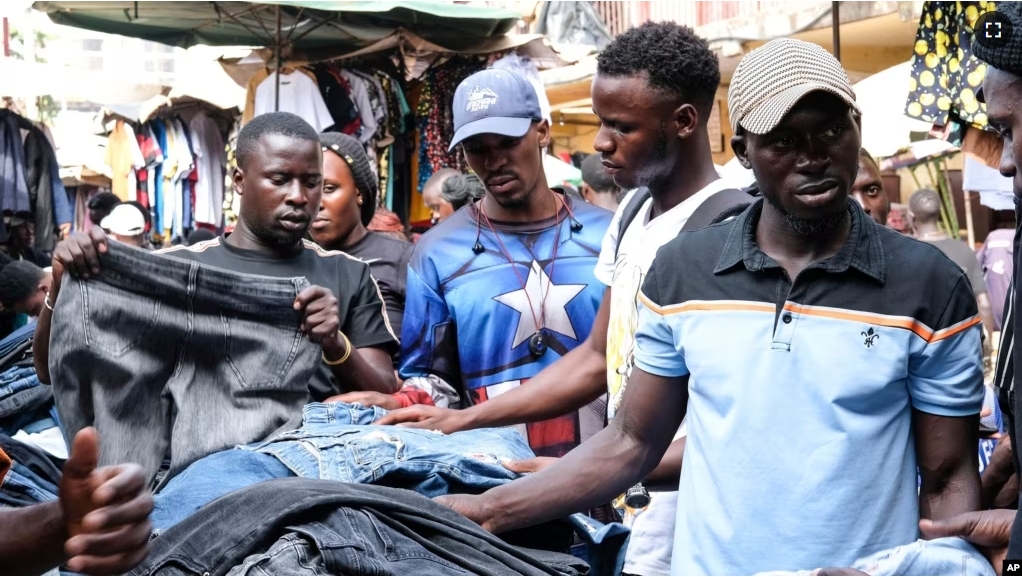People, rich and poor, crowd into Owino Market. Owino is a huge open market in Kampala, the capital city of Uganda. People here are mostly looking for secondhand clothing, clothes that have been worn by someone else. The clothes are usually low-cost but still are well made.
Such clothes usually come from Europeans and Americans who no longer want or need them. Businesses purchase the used clothing, and other businesses export them to sell in Africa. The business is valued at millions of dollars.
Some people say the demand for such clothes demonstrates that Africans believe Western fashion is better than clothes made in Africa.
In 2017, the U.S. Agency for International Development aimed to find out about the clothes East Africans buy. Its study found that about two-thirds of people in seven East African countries have “purchased at least a portion of their clothes from the secondhand clothing market.”
Although they are popular, secondhand clothes are facing increasing resistance. Ugandan President Yoweri Museveni has held power in Uganda since 1986. He declared in August that he was banning imports of used clothing. He said the clothes are “from dead people.”
“When a white person dies, they gather their clothes and send them to Africa,” Museveni said.
Trade officials have not yet enforced the president’s declaration, which requires a legal measure, such as an executive order.
Other African governments are trying to stop used clothing imports, saying the business is like sending waste to Africa and harms local cloth industries.
The East African Community trade bloc includes Burundi, Congo, Kenya, Rwanda, South Sudan, Tanzania and Uganda. It has advised banning imports of secondhand clothing since 2016. However, member states have not put bans into effect.
In Uganda, the president’s statement has spread concern among traders. A ban would put them out of business. Traders sell used clothes across the country of 45 million people. They do business in large open-air markets, roadside stands and even in stores in malls.
A group of traders in Kampala, known as KACITA, opposes a ban on secondhand clothing. The group suggests slowly reducing the imports so that local clothing producers can develop the ability to meet demand.
Some Ugandan clothing makers, like Winfred Arinaitwe, admit that the quality of locally made cloth is often poor. Many people choose to buy used clothing, she said.
“Because it lasts longer,” she said, “it can easily be seen.”
In Owino Market, a ban on used clothes is unbelievable to many. Some say they do not believe the president’s threat.
Abdulrashid Ssuuna’s job is to get people in the market to visit his brother’s used clothing business. He said a ban would deny him a way to make a living.
“It’s like they want to chase us out of the country,” he said of the president’s order. He said he cannot afford to sell new clothes.
The market is competitive, with sellers sitting behind heaps of clothes and shouting words of welcome to possible buyers.
If he helps his brother sell clothing, “I get something,” said Ssuuna, who started this work after dropping out of high school in 2020.
The market is always full of buyers, but business is unpredictable. Traders must try to imagine what people want before other sellers do.
Tadeo Walusimbi has been a used clothing trader for six years. He said some days are better than others, but he warned a government ban would not be supported.
It “will not work for me and for so many people,” Walusimbi said.
I’m Gena Bennett.
Rodney Muhumuza reported this story for Associated Press. Gena Bennett adapted it for VOA Learning English.
_______________________________________________
Words in This Story
fashion–n. a kind of clothing that is popular at a given time
portion–n. a part of a whole amount
mall–n. a large building that has many stores inside it
afford–v. to have enough money to pay for something
heap –n. a large, disordered group of things
